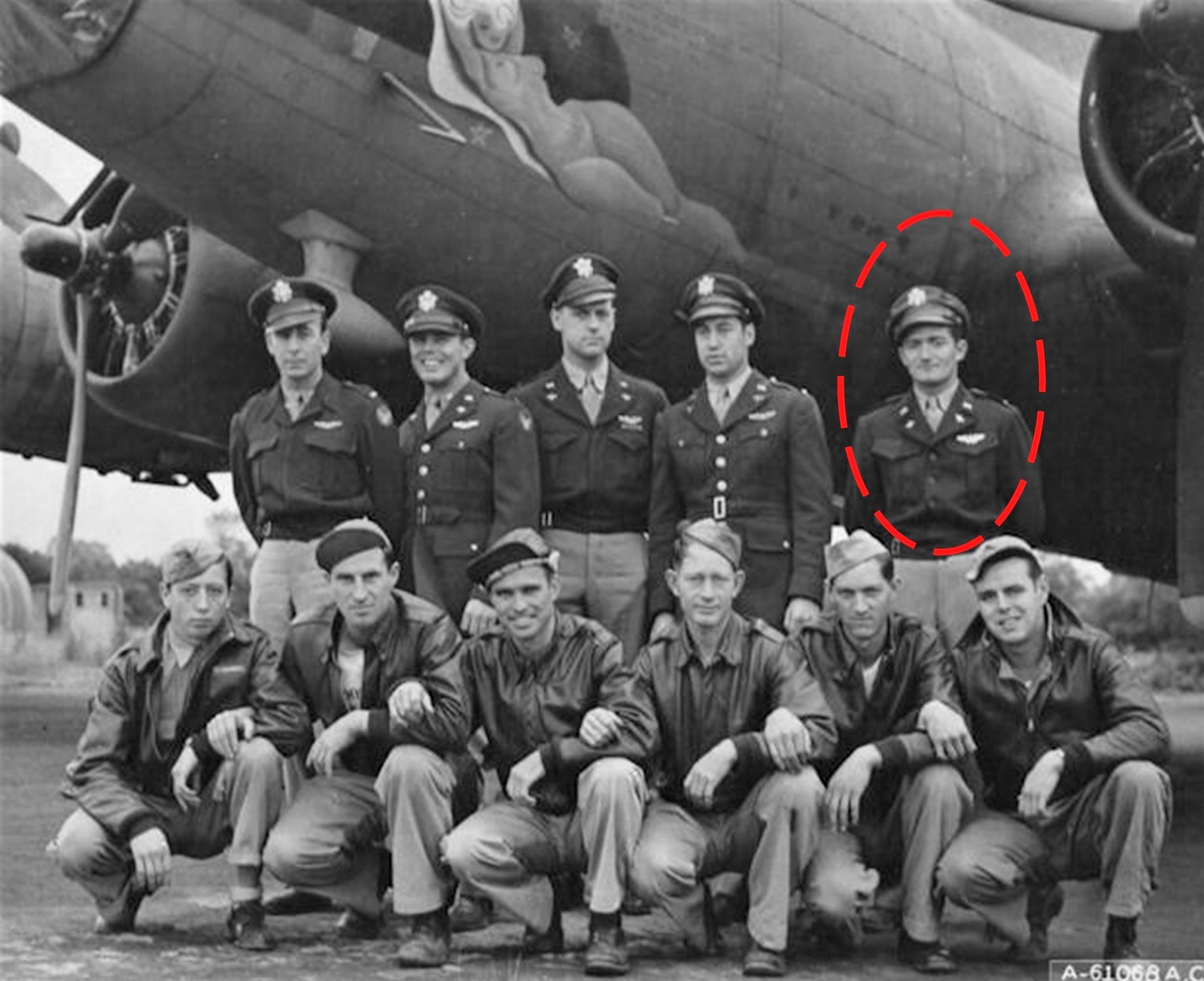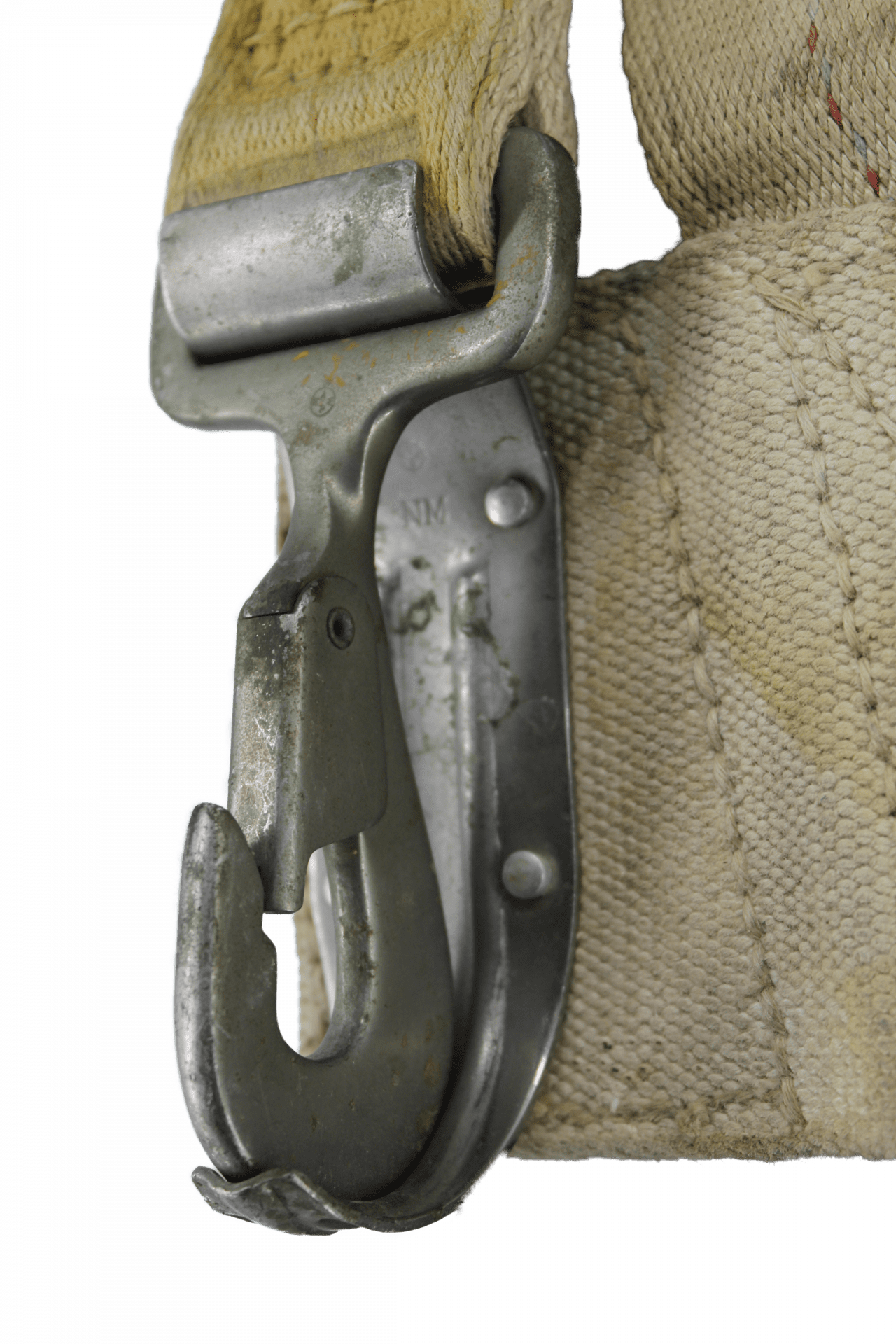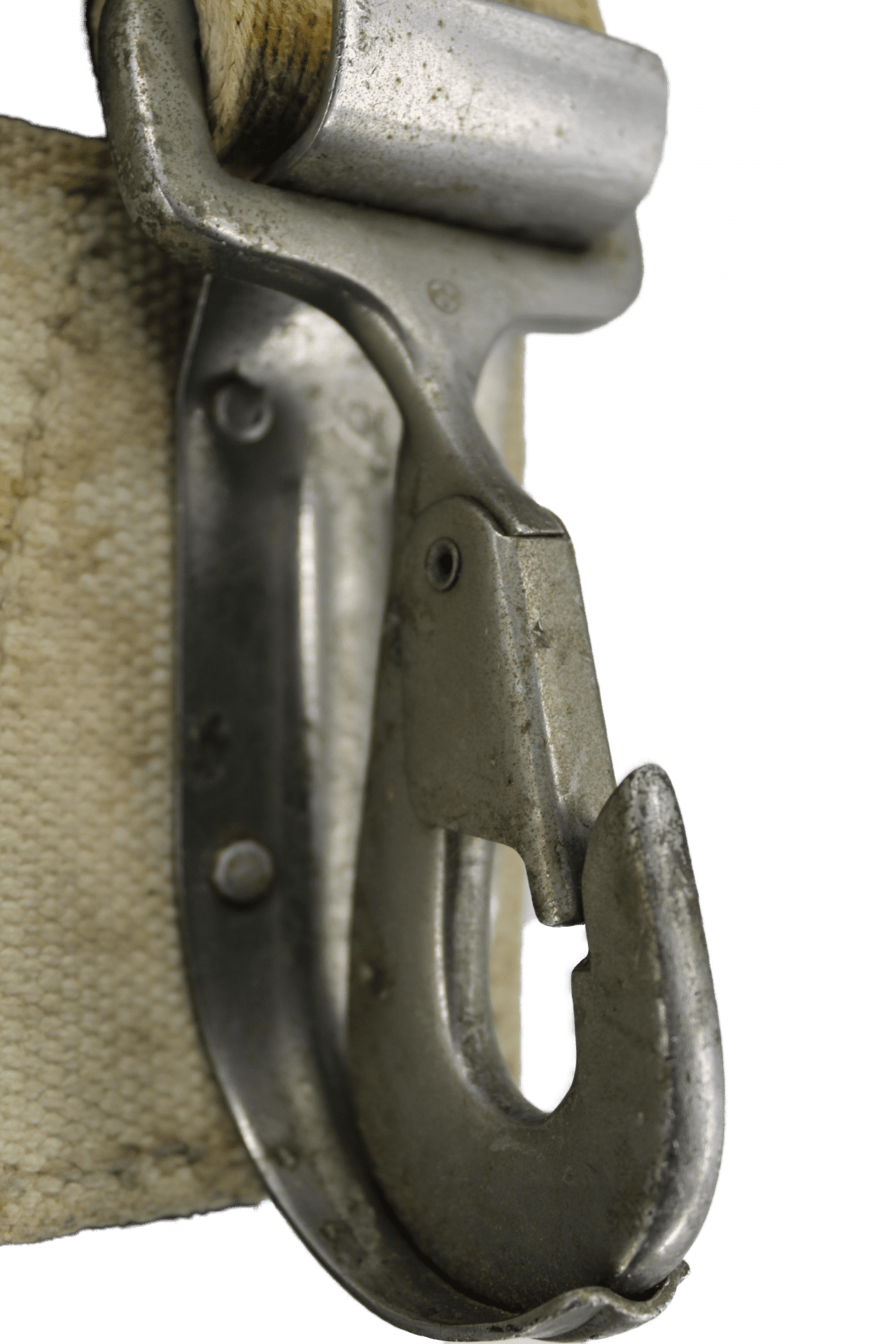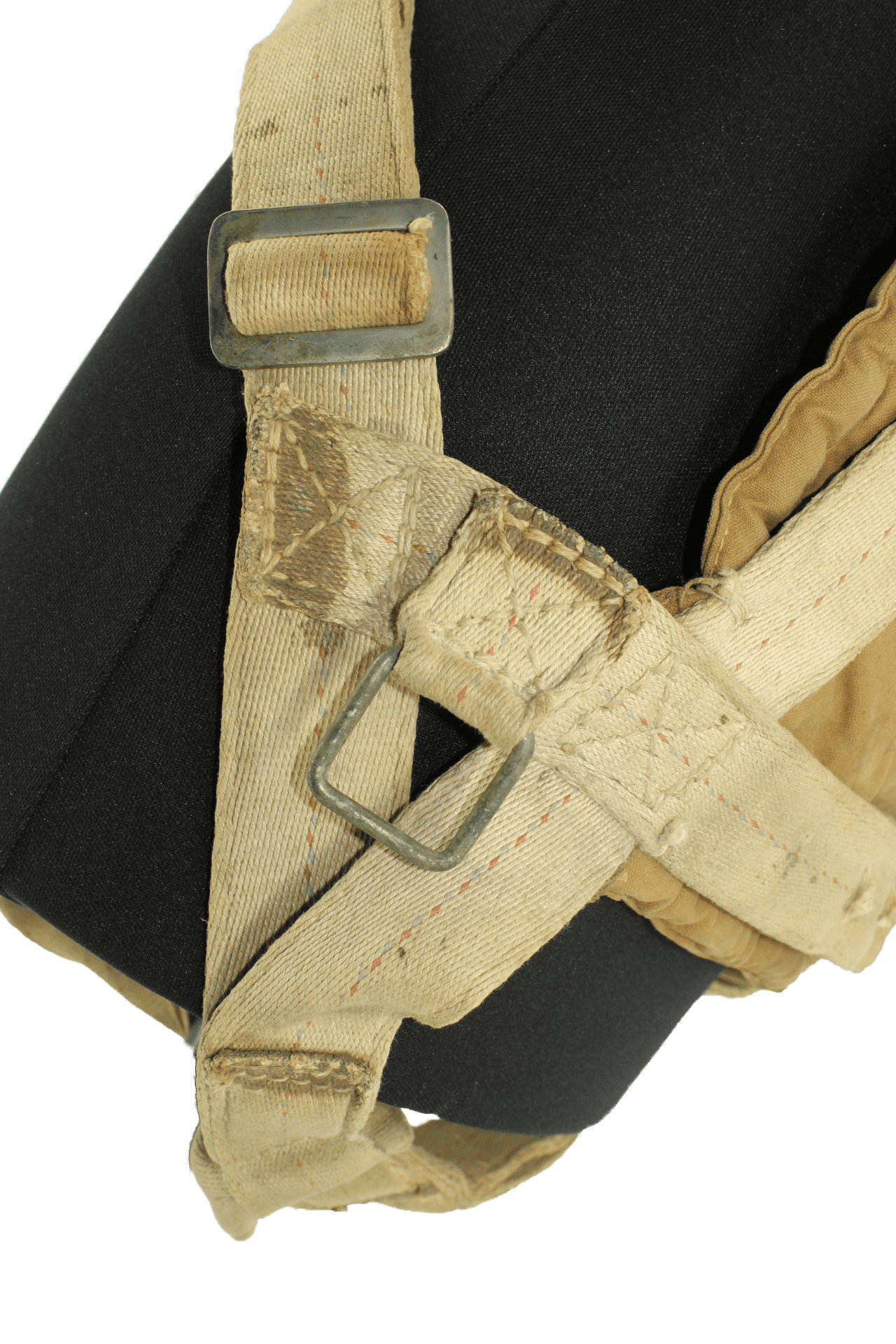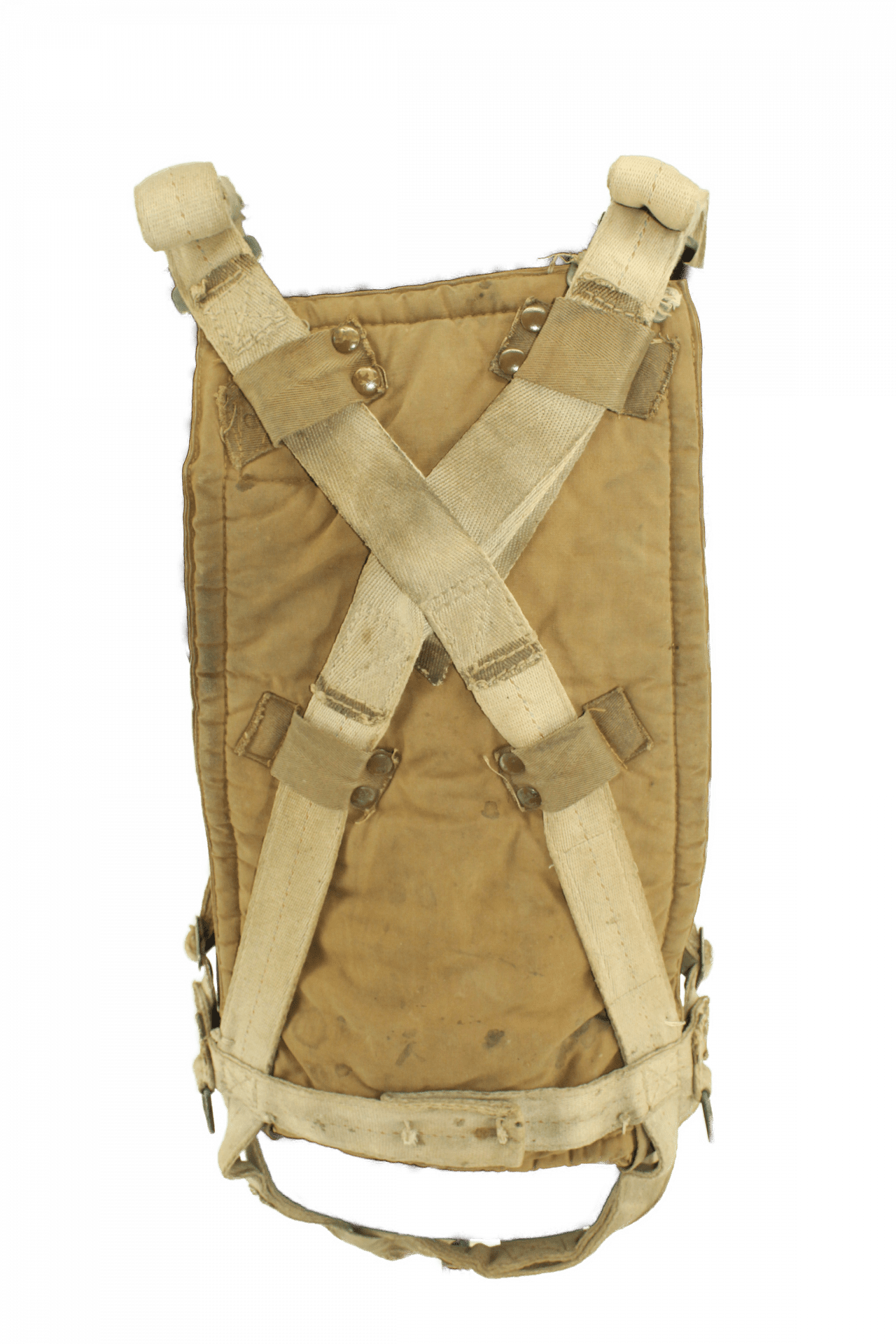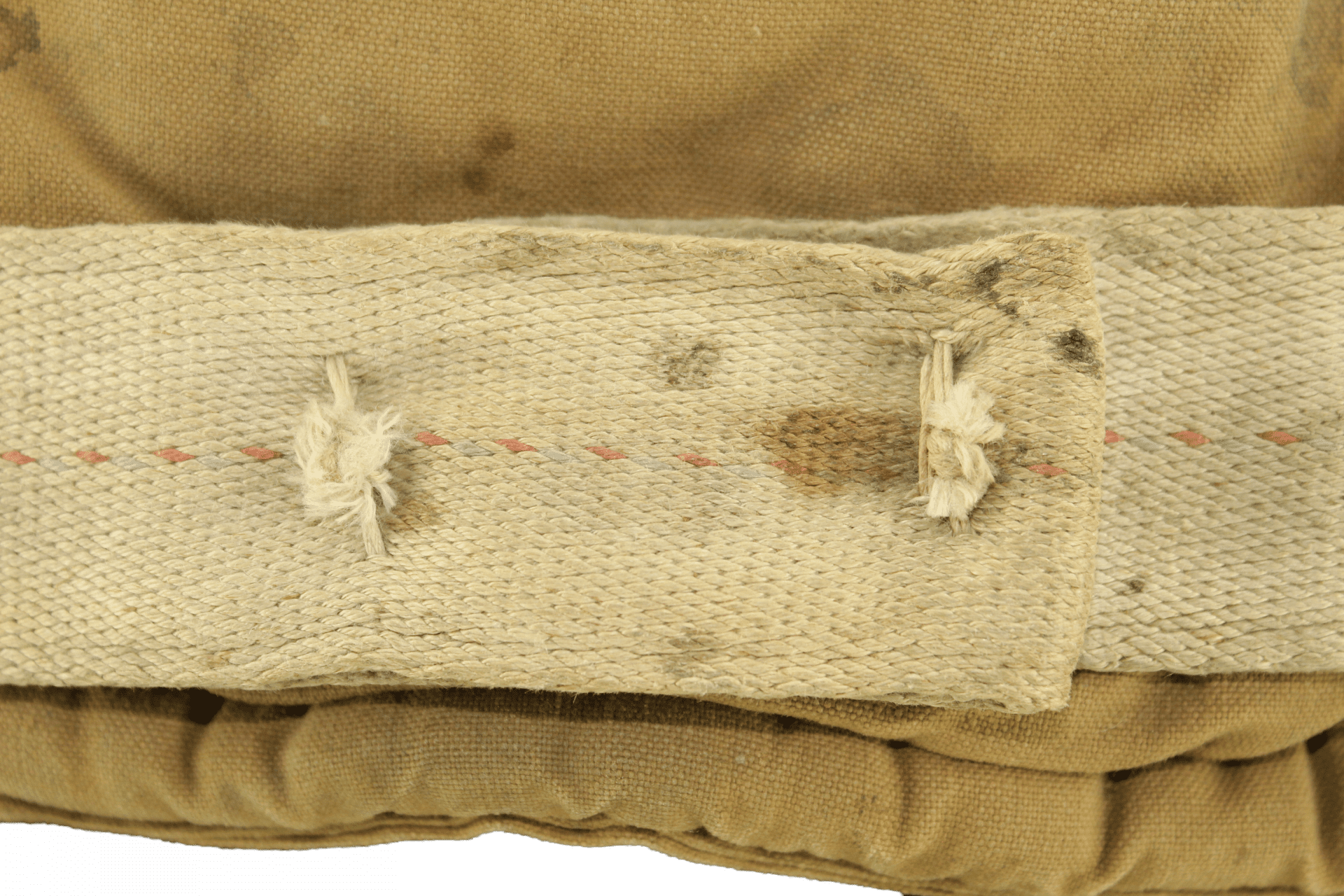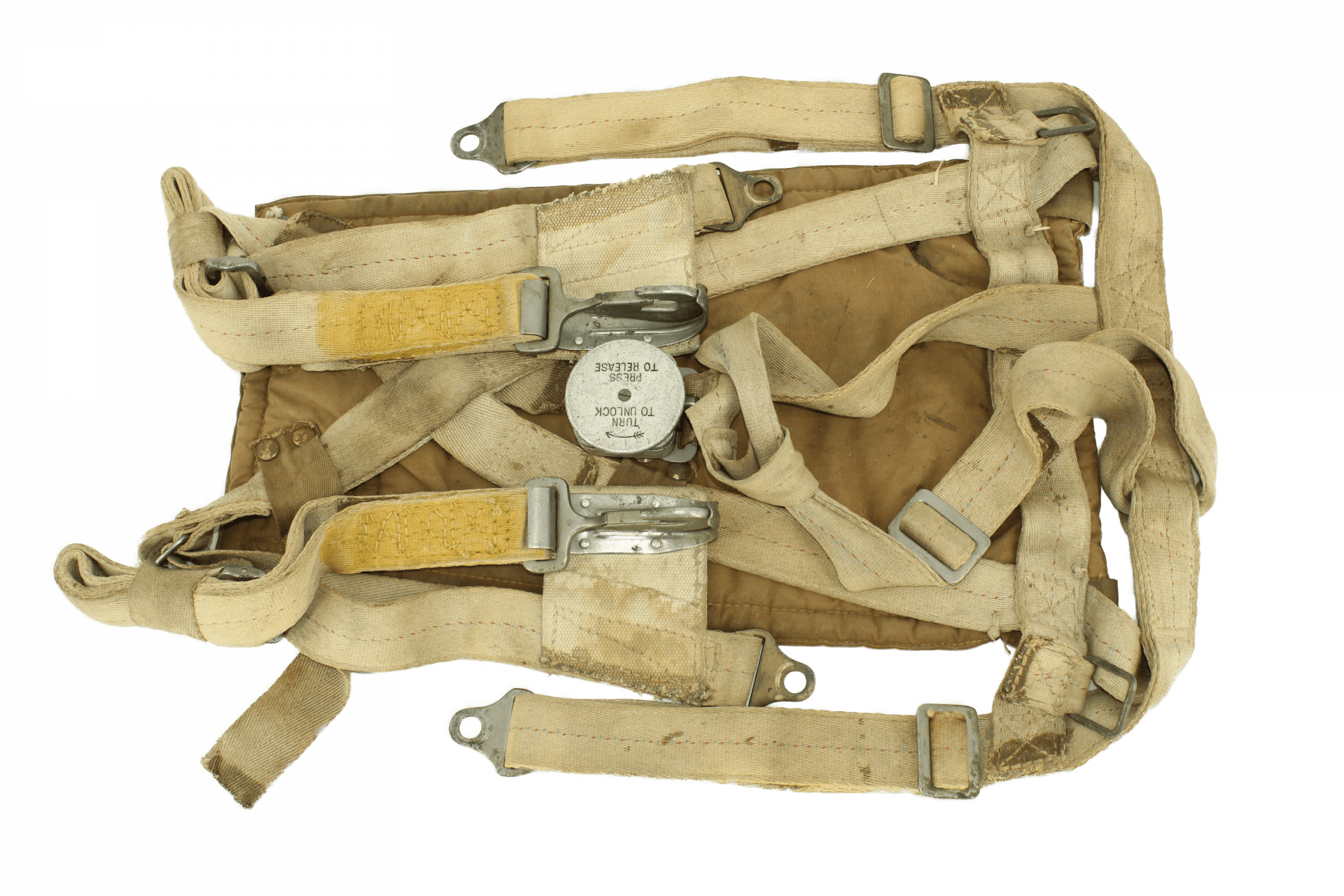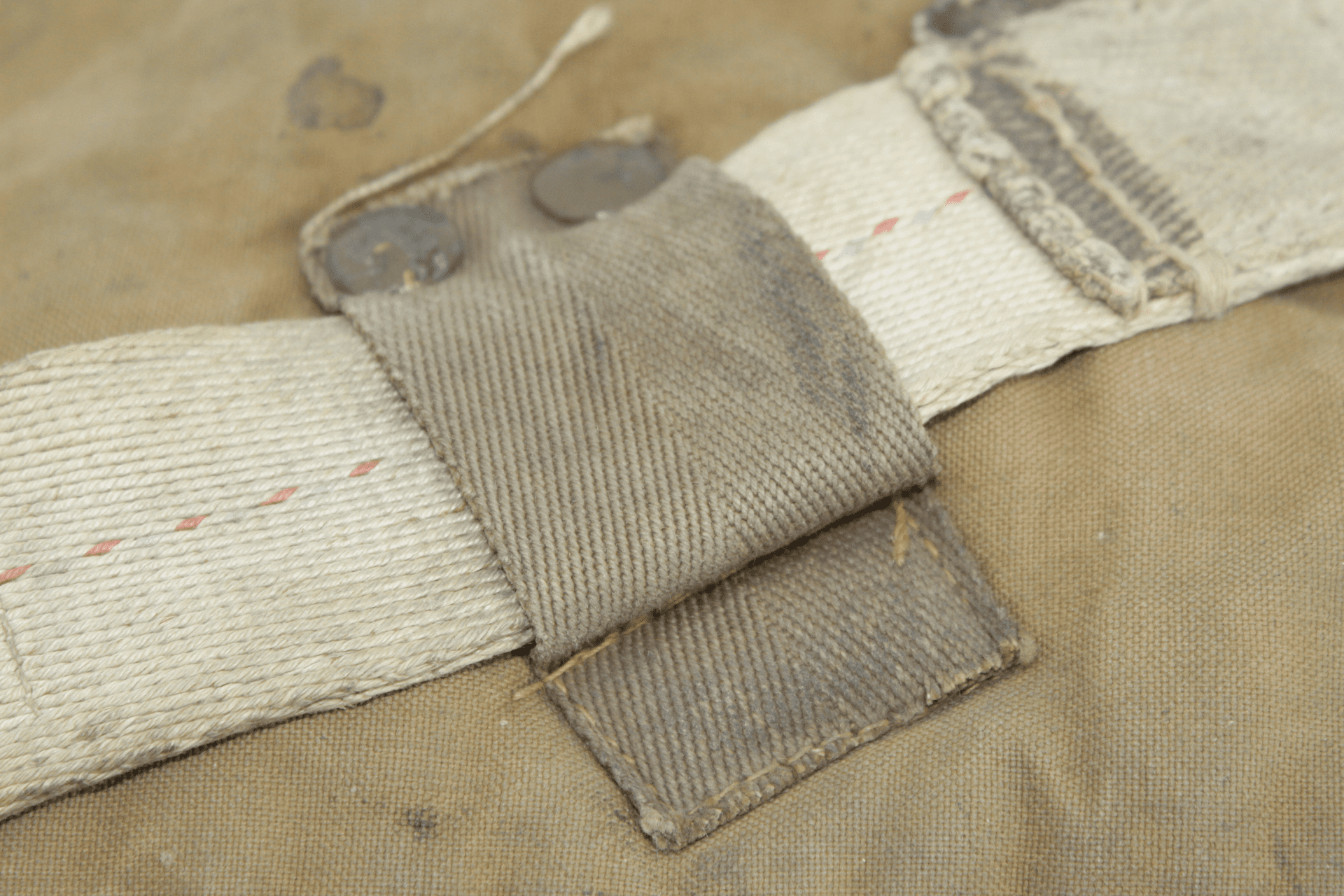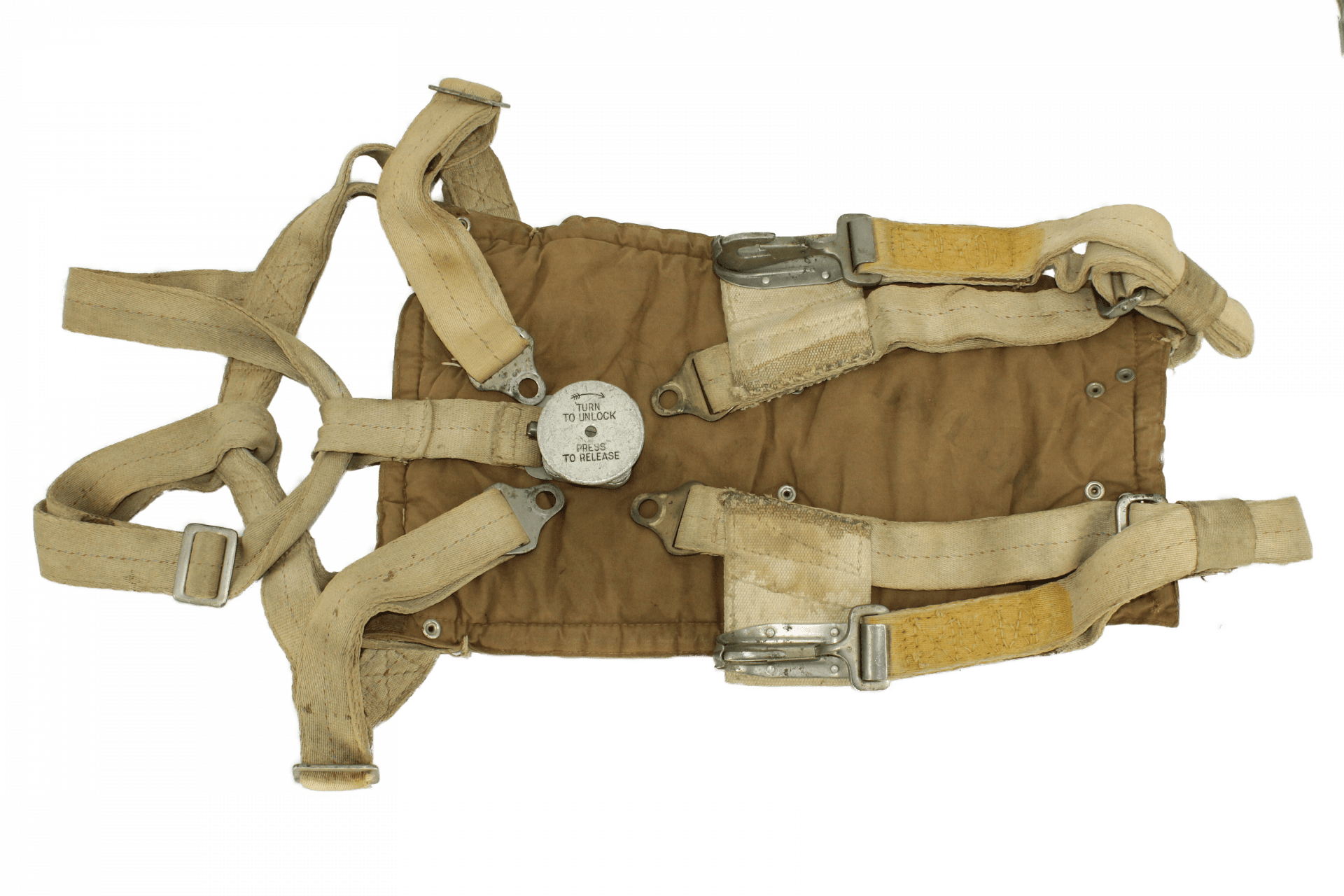Parachute “Harness Observer” identified 8th Air Force 303 Bomber Group
Vendu 3100,00 €
Nous contacter
RAF type Harness Observer parachute identified with 2Lt Richard E. Webster 8th Air Force of 303d Bomber Group / 358th BS on B17FG 41-24629.
The 303d Air Expeditionary Group was first activated in February 1942 as one of the first B-17 units in England during World War II.
Richard E. Webster has flown on all 24 credited combat missions with 1Lt John W. Hendry and also one credited mission with 2Lt Robert S. O’Connor.
He became a prisoner of war during mission 79, hit in the chest by fragments of 20mm shells, he was saved by his bulletproof suit but seriously injured in the leg.
During Mission 79 on October 20, 1943 over Duren, Germany, shells from a German ME-109 ignited a fire in the left wing fuel tank.
1Lt John W. Hendry gave the order to evacuate when it became clear that the B-17 could explode. It exploded at low altitude near Valenciennes, France. Debris (fuselage, wings, engines and bombs) fell throughout the city.
The bodies of 2Lt Harper and T / Sgt Brown were sadly found in the remains of the War Bridge and will be buried on October 22, 1943 at British Valenciennes St Roch Cemetery with seven crew members from an RAF Halifax bomber who crashed on the night of October 20 and 21, 1943.
They will then be transferred to an American cemetery on September 17, 1945.
2Lt Harper now rests in Coleville-sur-Mer cemetery, Normandy.
The destruction of B17FG 41-24629, was attributed to Major Mietusch, leader of group 11 / JG 26, who was flying in an ME-109G and holder of the Ritterkreuz (Knight of the Iron Cross).
This parachute was discovered in the north of France and it served as an illustration for this type of Harness distributed in approximately 2000 copies to the US Army Air Force, in the excellent book by Mathieu Bianchi “Flight Gear” page 95 .




